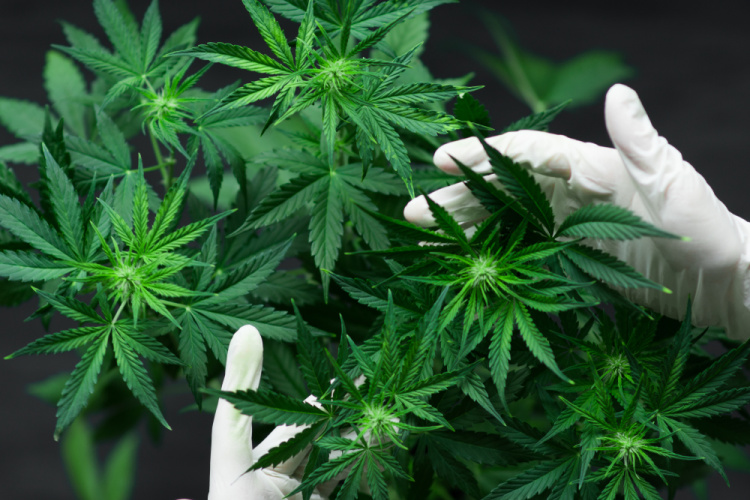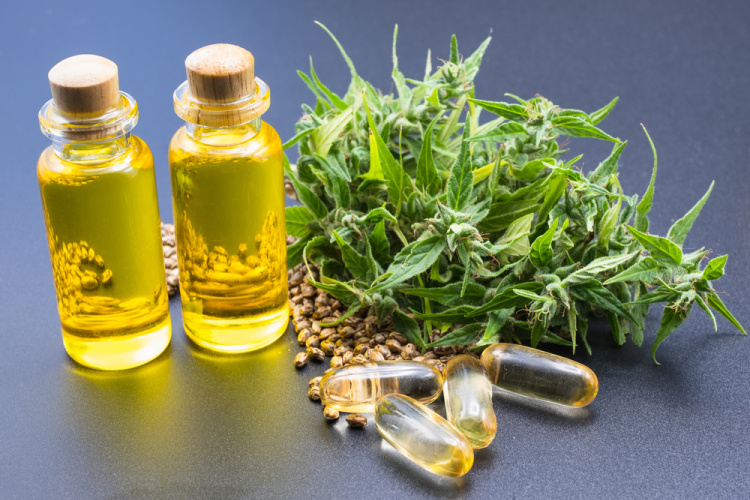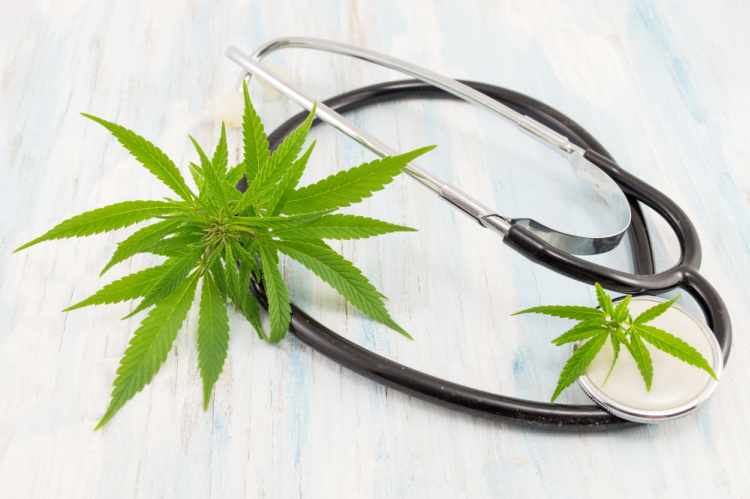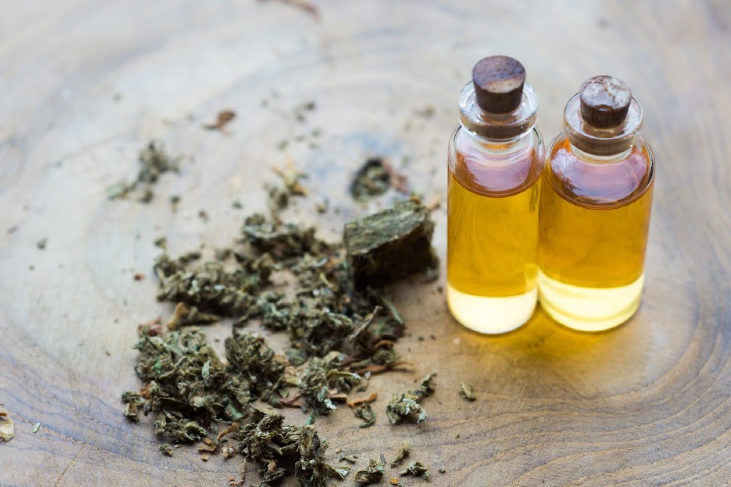Chances are, you’re familiar with the concept of medical cannabis. However, you may not actually know how medical marijuana works or what kinds of conditions cannabis may help alleviate. Don’t worry; we’re here to help. Below, we’ll break down how medical cannabis products such as flower, concentrates, and edibles can help patients who are suffering from many different conditions and symptoms.
Medical Cannabis: What is it and How Does it Work?

To date, 36 states and four U.S. territories, including the District of Columbia, have legalized medical marijuana in some form. Washington state was an earlier adopter of legalizing medical cannabis statewide, having passed laws protecting its use in 1998. Currently, nearly 55,000 Washington residents hold active medical marijuana cards.
But how exactly does medical cannabis work to help patients who are suffering from chronic conditions and acute symptoms? The key to cannabis’ effects lies in two different families of compounds: cannabinoids and terpenes.
Cannabinoids and Terpenes
Medical marijuana derives its effects from two main categories of active ingredients. The first, known as cannabinoids, consist of more than 100 compounds.
THC and CBD are the most common cannabinoids. They each comprise up to 30% of the active ingredients in cannabis. In addition, minor cannabinoids such as CBG and CBN each have their own part to play in medical marijuana’s possible effects. They make up significantly less of a plant’s cannabinoid profile, though, maxing out at 1% each.
Cannabinoids aren’t the only active ingredient in marijuana. Terpenes also play a significant role in determining the various properties of medical cannabis. This class of organic compounds exists widely throughout nature in trees and plants of all kinds. The main role of terpenes involves carrying aroma and taste. However, they also can exert an influence on the overall effects medical marijuana creates in the body.
Common Effects of Medical Cannabis

Medical marijuana products possess a plethora of properties, depending on the strain and compound makeup of the particular cannabis plants used to make them, and may generate beneficial effects for cannabis patients. Some of the most significant and useful properties of medical cannabis include:
Reducing Inflammation
According to research, cannabis products may be particularly adept at reducing inflammation in the body. As a result, medical marijuana could be an effective way to alleviate a variety of conditions that involve uncomfortable swelling and pressure.
Increasing Appetite
If you’re a regular cannabis user, you may be familiar with “the munchies.” But you may not be aware that this effect of cannabis could actually help patients gather their strength to aid the recovery process and during medical treatment cycles such as chemotherapy.
Soothing Pain
Another one of the primary effects of medical cannabis is the possible alleviation of both chronic and acute pain. In fact, ancient Chinese sources from nearly 5,000 years ago describe using hemp tea to treat aches and pains, from minor toothaches to recurring injuries.
Easing Anxiety
Cannabis, in particular CBD, appears to have anxiolytic, or stress-reducing, properties. This helpful effect can range from helping ease daily tension to potentially alleviating clinical conditions (more on that later).
This is by no means an exhaustive list of the beneficial properties of medical marijuana. However, it does summarize some of cannabis’ most significant therapeutic properties and demonstrate how medical cannabis products may be useful in alleviating symptoms caused by many different conditions.
Qualifying Conditions for Medical Cannabis

Each state has its own medical marijuana regulations. As a result, no two states have exactly the same laws or rules related to availability, product types, and treatable conditions.
All patients should note that doctors are only authorized to prescribe medical marijuana in Washington state if the patient’s condition doesn’t respond well to traditional medical treatments. Every patient is different and we encourage patients to openly discuss available options with their doctors.
In Washington state, doctors may prescribe medical marijuana to patients for several reasons including:
Cancer
For decades, some cannabis’ proponents have claimed the plant can cure cancer. While there may be some preliminary research on this idea, the data remains way too premature to draw any conclusions and no reputable medical cannabis dispensary, including ours, would purport that cannabis can achieve this feat.
There has been some clinical research and animal models have demonstrated that CBD may be able to kill certain cancer cells and reduce the size of tumors, according to the American Cancer Society, and researchers continue to look at the possibility.
That said, medical marijuana has shown to be beneficial to many cancer patients in other ways. Medical cannabis products may help cancer patients find relief from chronic pain common to various forms of cancer. What’s more, marijuana can increase a patient’s appetite, helping them gain strength and recover from energy- and appetite-sapping treatments.
Epilepsy
Medical marijuana appears to be an effective way to alleviate symptoms of certain types of epilepsy. The most famous example of this possible trait is Charlotte Figi, a Colorado girl who received cannabis treatment for her rare and debilitating form of epilepsy. According to reports, Charlotte suffered from 300 grand mal seizures each week before using medical cannabis. Her seizures were so severe that she couldn’t walk, and her heart stopped multiple times.
After using medical marijuana, Charlotte experienced between two and three seizures per month. She even learned to walk and ride a bike. While Charlotte has since lost her battle, passing away in 2020, her story has helped encourage further medical marijuana research and there’s even a cannabis strain named in her honor called Charlotte’s Web.
Hepatitis C
Medical cannabis may be used for relief from symptoms such as recurring pain or debilitating nausea that develop in later stages of the disease, as well as from the unpleasant side effects that result in some users from medications used to treat Hepatitis C.
Glaucoma
One of the oldest uses for medical cannabis was to assist glaucoma patients. Studies show that compounds in cannabis may be able to reduce intraocular pressure (IOC), easing the symptoms that glaucoma patients suffer from, including headache and eye pain.
HIV/AIDS
While medical marijuana won’t stop the progression of HIV or AIDS, doctors may choose to combine its use with antiretroviral therapy (ART) to help make their patients more comfortable. Data shows that cannabis may help reduce the chronic neuropathic pain that many AIDS patients endure. What’s more, cannabis can also increase appetite, counteracting the appetite-suppressing effects of the virus. Finally, while ART may prevent the progression of AIDS, one of the therapy’s side effects includes inflammation. Cannabis’s anti-inflammatory properties may provide added alleviation from these side effects.
Severe or Chronic Pain
Pain reduction is probably one of the most common uses for medical marijuana. Research appears to show that cannabis may help patients suffering from severe and recurring pain, such as arthritis or pain from an old injury. That same data suggests that medical cannabis products could have fewer side effects than current pharmaceuticals used to treat pain. For example, non-steroidal anti-inflammatory drugs (NSAIDS), a common class of painkilling drugs, can trigger stomach ulcers with high or repeated doses.
Multiple Sclerosis
Spastic conditions such as multiple sclerosis (MS) and epilepsy can be painful and debilitating diseases. Additionally, they’re often very difficult to treat. Patients suffering from spastic disorders, however, may find some relief with medical cannabis. Data shows that MS patients self-reported less pain and spasticity after using medical marijuana. Unfortunately, researchers have had a difficult time quantifying these results outside of patients self-reporting how they feel and additional research is needed to learn more.
Post-Traumatic Stress Disorder (PTSD)
Research shows that medical cannabis may be able to help patients suffering from residual trauma. As a result, cannabis products may help patients from all walks of life—from combat veterans to survivors of abuse—improve their mental health by helping reduce anxiety and elevate mood.
Common Ways to Take Cannabis Products
Generally, patients can take medical marijuana one of two ways. The most common involves inhaling cannabis smoke or vapor. However, cannabis edibles have become increasingly popular over the last few years. Both of these methods have their own advantages and potential drawbacks.
Inhaled Cannabis Products and How They Work
If you’re in a hurry, you can’t beat inhaled cannabis for its rapidity. Inhaling medical marijuana leads to a faster onset time than other consumption methods. That’s true regardless of whether you’re vaping or smoking marijuana.
These quickly-generated effects are a result of inhaling cannabis smoke or vapor that transports the compounds directly and deeply into your lungs. Once there, cannabinoids and terpenes pass from tiny air sacs in your lungs promptly into your bloodstream. After they get introduced to the bloodstream, you’ll begin feeling the effects of medical cannabis nearly immediately.
How are Cannabis Edibles Different from Inhaled Cannabis?
In contrast to inhaled cannabis, taking cannabis edibles results in a slower onset time. That’s because they don’t pass directly into your bloodstream. Instead, when you take a cannabis edible, it enters your stomach and passes into your digestive tract.
From there, the cannabis compounds reach your liver. Then, your liver metabolizes the THC within an edible into a new compound. Finally, your liver passes this new compound, called 11-hydroxy-THC, into your bloodstream.
Your body may take up to an hour or more to complete this process. But there’s a positive trade-off for your patience. Effects from cannabis edibles appear to last significantly longer than from inhaled medical marijuana, so your relief could last a few hours or more.
Getting a Washington Medical Cannabis Card
In many states, prospective marijuana patients don’t have any way to apply for their prescriptions. Fortunately, the state of Washington has streamlined its medical marijuana application process.
Step 1: First, schedule an appointment with a healthcare professional that prescribes medical marijuana.
Step 2: Next, have your medical practitioner give their written authorization for you to become a medical cannabis patient.
Step 3: Visit one of Washington State’s approved medical cannabis stores to receive your medical card.
Once you receive your medical card, you’ll be able to purchase medical-grade cannabis tax free. Any Washington resident over the age of 18 may apply for a medical cannabis card with their doctor’s written authorization.
Where Can Patients Buy Medical Cannabis in Washington State?
Interested in exploring the possible benefits of medical cannabis for yourself? You’re in the right place. Browse this complete inventory of premium medical cannabis products to discover your favorite type of flower, concentrate, or edible. And if you’re looking for help deciding, let us know. Our knowledgeable and helpful budtenders are always here to serve you.





